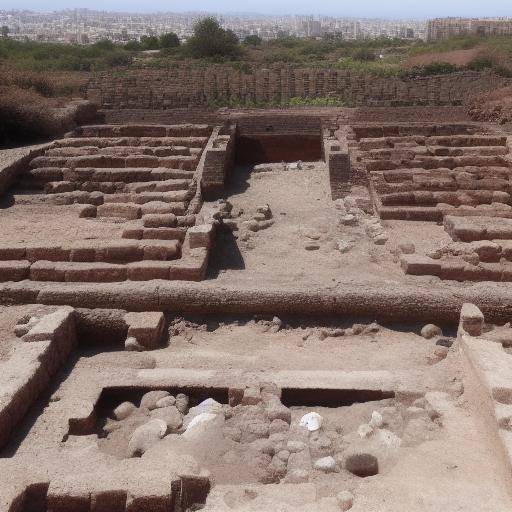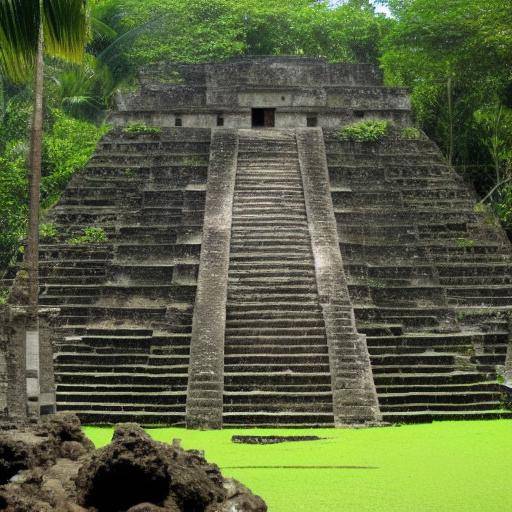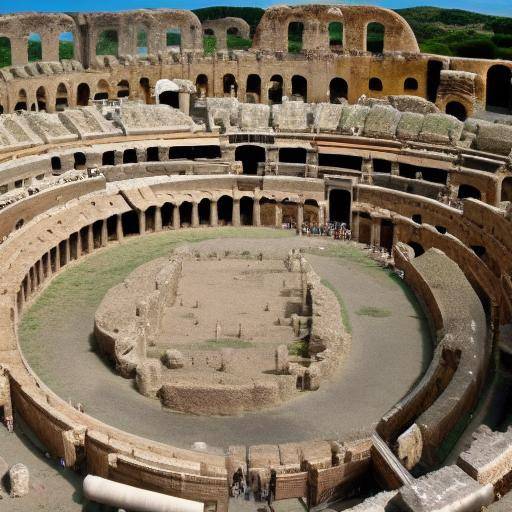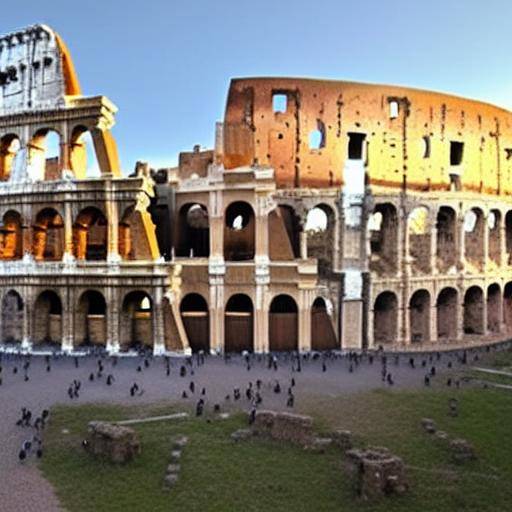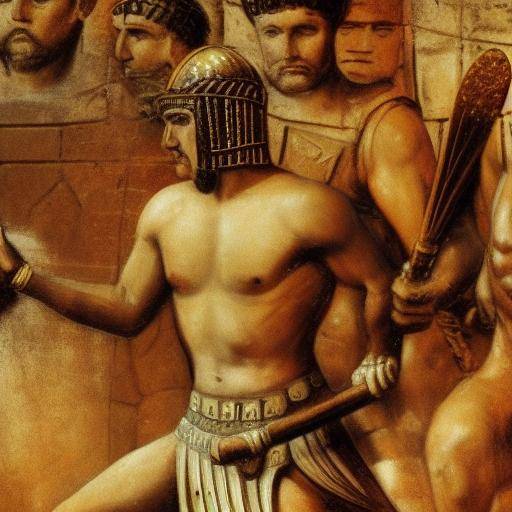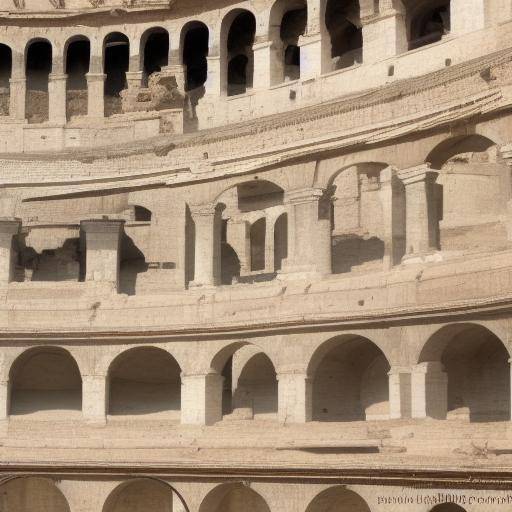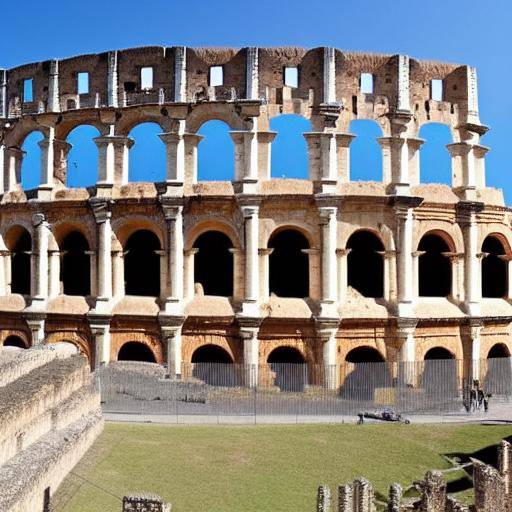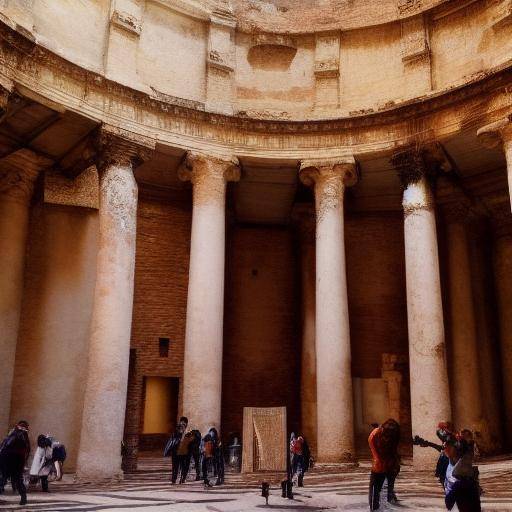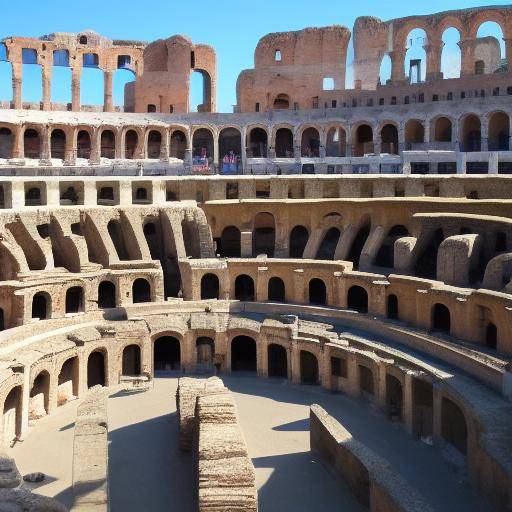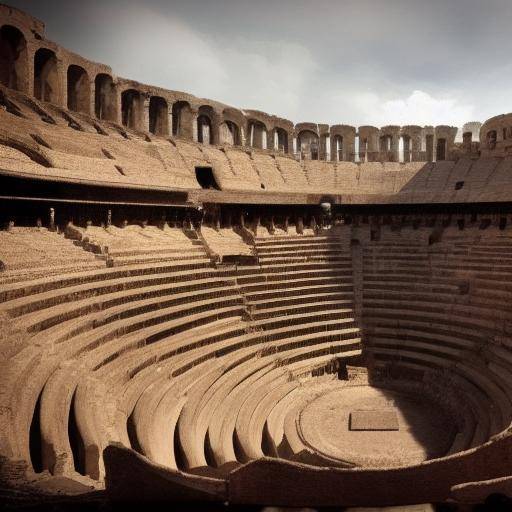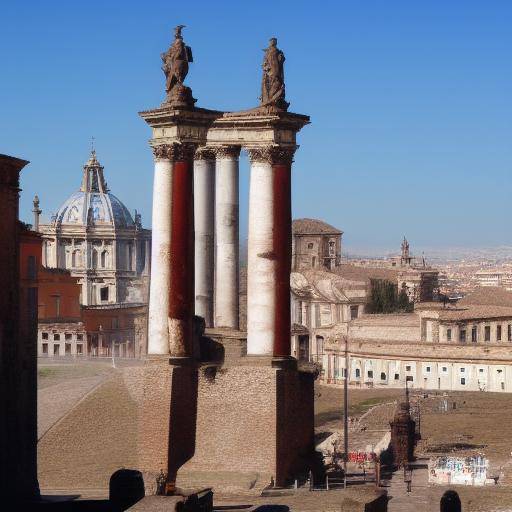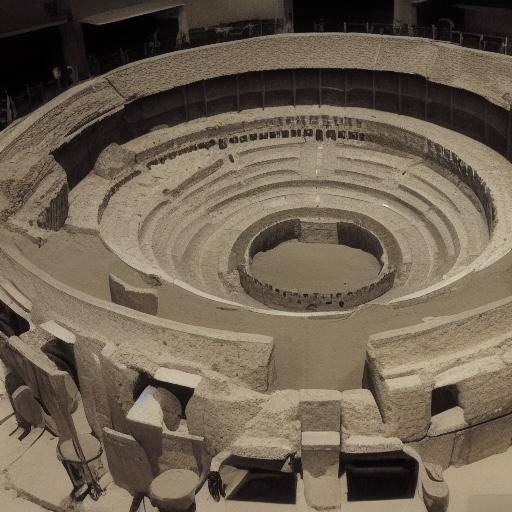
The Colosseum, an icon of Roman grandeur, served as a stage for the shows that defined an era. From the struggle between ferocious gladiators to the most impressive theatrical performances, this majestic amphitheater has witnessed countless events that have left an imprint in history. In this article, we will explore the history, importance and lasting influence of the Colosseum in ancient Rome, as well as its relevance in Roman history in general.
Introduction
The Colosseum, known by the Romans as "Anfiteatro Flavio", is one of the architectural wonders that has resisted the passage of time. Inaugurated in the year 80 AD, this imposing amphitheater was the scene of epic battles, wild beast hunting, public executions and theatrical performances. With a capacity to accommodate more than 50,000 spectators, the Colosseum became the epicenter of the social and cultural life of ancient Rome.
In the following sections, we will discover the origins and evolution of the Colosseum, explore its impact on Roman society, and compare this iconic monument to other relevant aspects of Roman history.
History and Background
Origins and Construction of the Colosseum
The Colosseum was commissioned by the Emperor Vespasian of the Flavia dynasty, and its construction was carried out in the same place where an immense artificial lake was erected at the Golden Palace of Nero. This monumental structure, composed mainly of stone and concrete, represented an impressive architectural achievement that still amazes visitors from around the world.
Importance and Legacy of the Colosseum
The Colosseum was not only a place of entertainment, but also a symbol of the power and greatness of the Roman Empire. His shows served as a tool of social control, keeping the population entertained and, at the same time, reinforcing the imperial authority. Through its events, the Colosseum reflected Roman ideology and values, and its impact has remained alive over the centuries.
Impact of the Colosseum on the Roman Society
The Coliseum's Durable Influence
The presence of the Colosseum in the daily life of the ancient Romans was omnipresent. From the highest classes to ordinary citizens, the amphitheater was a meeting point that transcended social barriers. Follow-up and passion for shows were shared by people of all classes, thus consolidating the importance of the Colosseum in the Roman identity.
The Technique and the Gladiator Strategy
The gladiator fights, the most emblematic show of the Colosseum, were meticulously choreographed and planned to maximize drama and emotion. The gladiators, trained in the art of combat, became celebrities whose martial skills and courage were admired by the audience. These events not only served as entertainment, but also transmitted values of courage, honor and tenacity.
Animals in the Colosseum
Another fascinating aspect of the shows at the Colosseum was the participation of exotic animals, captured throughout the Roman Empire. These wild hunts, known as "venationes", offered a visually shocking spectacle that challenged both the skill of hunters and the ferocity of wild beasts.
Comparison: Colosseum, Rome and Roman History
Colosseum vs. The Roman Forum
The Colosseum is distinguished from the Roman Forum, another focal point of Roman life, for its distinctive functions and architecture. While the Colosseum was the place of entertainment and mass shows, the Roman Forum was the political, religious and commercial epicenter of ancient Rome. Both sites represent fundamental facets of Roman life, providing insight into the diverse nature of Roman society and its multifaceted environment.
Colosseum in the News
Despite the centuries that have passed since its peak, the Colosseum remains an emblematic symbol of Rome and continues to attract millions of visitors every year. Its impact on Roman history is undeniable, and its preservation and restoration are testimoni multiplying the ancient site's rich cultural significance to future generations.
Conclusion " FAQs
Conclusion
El Coliseo, with its rich history and enduring influence on Roman society, stands as a testament to the grandeur and complexity of ancient Rome. Its grandeur, complexion and recoverable, as follows attracting attention of researchers and historians seeking to discern or our glorious past.
Frequently asked questions
What was the capacity of the Colosseum?
The Colosseum had an estimated capacity to accommodate between 50,000 and 80,000 spectators, which showed the magnificence and scale of the spectacles that developed there.
What is the importance of the Colosseum in Roman history?
The Colosseum was a symbol of the power and greatness of the Roman Empire. Their events not only entertained the population, but also served as a tool of social control and an expression of Roman values and ideology.
What shows were performed at the Colosseum?
In addition to the famous gladiator fights, the Colosseum hosted wild animal hunts, theatre performances, simulated naval battles, and public executions, among other shows.
What was the impact of the shows on Roman society?
The shows in the Colosseum had a significant impact on Roman society, working as a social control tool and strengthening imperial authority, while providing entertainment and transmitting Roman values and virtues.
What is the architectural importance of the Colosseum?
The Colosseum is an architectural masterpiece that has resisted the passage of time. Its innovative design, combined with the ability to accommodate large crowds, makes it a wonder of the ancient world.
What is the legacy of the Colosseum today?
Today, the Colosseum remains an iconic symbol of Roman grandeur. Its lasting legacy is reflected in its tourist attraction, its influence on popular culture and its historical and architectural importance.
Conclusion:
The Colosseum, with its rich history and its lasting influence in Roman society, stands as testimony to the greatness and complexity of ancient Rome. Their preservation and restoration continue to multiply the rich cultural significance of the ancient site for future generations.

